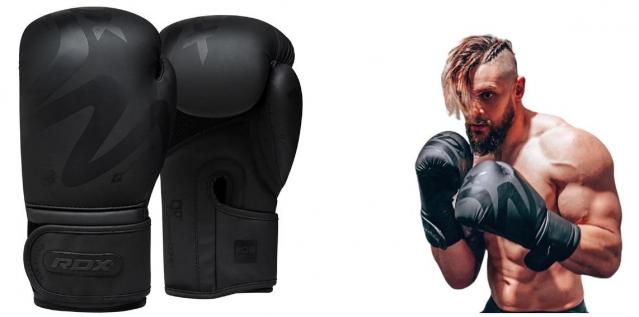Boxing is a sport that demands agility, strength, and discipline. Whether you're a seasoned athlete or just starting out, one of the most crucial pieces of equipment you'll need is a good pair of boxing gloves. In this guide, we'll delve into everything you need to know about gloves for boxing to protect your hands and train smarter.
The Importance of Boxing Gloves
Boxing gloves serve a dual purpose: to protect your hands from injury and to enhance your overall performance. When engaging in any form of striking training, whether it's hitting a heavy bag or sparring with a partner, the repeated impact can take a toll on your hands. Boxing Gloves provide crucial cushioning to absorb the force of your punches, reducing the risk of hand injuries such as fractures or sprains.
Moreover, these gloves help distribute the impact more evenly across your fists, wrists, and forearms, allowing you to punch with greater power and precision without risking injury.
Types of Boxing Gloves
There are several types of boxing gloves designed for different purposes:
Bag Gloves:
These gloves are specifically designed for use on punching bags. They offer ample padding to protect your hands during intense bag workouts, focusing on cushioning and support rather than the flexibility needed for sparring.
Sparring Gloves:
Sparring gloves are intended for use during practice bouts with a partner. They typically have more padding than bag gloves to ensure the safety of both you and your sparring partner, reducing the risk of cuts, bruises, or concussions.
Training Gloves:
Training gloves are versatile gloves suitable for various boxing activities, including bag work, sparring, and mitt drills. They strike a balance between padding, protection, and flexibility, making them ideal for all-around training purposes.
Factors to Consider When Choosing Boxing Gloves
When selecting boxing gloves, several factors should influence your decision:
Size and Weight:
Boxing gloves come in various sizes and weights, ranging from 8 oz to 18 oz. The right size for you depends on your body weight, hand size, and intended use. Heavier gloves offer more protection and are typically used for sparring, while lighter gloves are preferred for speed and agility training.
Material:
Most boxing gloves are made from either synthetic leather or genuine leather. Synthetic gloves are more affordable and durable, while leather gloves offer superior comfort and breathability. Consider your budget and preferences when choosing the material.
Closure Type:
Boxing gloves typically feature either Velcro straps or lace-up closures. Velcro gloves are convenient and easy to put on and take off, while lace-up gloves provide a more customized and secure fit. Lace-up gloves are often preferred by professional boxers for their snug fit and wrist support.
Padding:
The padding of boxing gloves varies in density and distribution. Look for gloves with adequate padding to cushion your hands and wrists without compromising on mobility. Multi-layered foam padding is ideal for absorbing impact and reducing the risk of injury during training sessions.
Proper Maintenance of Boxing Gloves
To prolong the lifespan of your boxing gloves and ensure optimal performance, it's essential to practice proper maintenance:
Cleaning:
Wipe down your gloves with a damp cloth after each use to remove sweat and odor. Periodically, you can clean them more thoroughly with a mild detergent solution and allow them to air dry completely. Avoid submerging leather gloves in water, as this can damage the material.
Drying:
Avoid leaving your gloves in damp or confined spaces, as this can encourage bacteria growth and lead to unpleasant odors. Instead, allow them to air dry in a well-ventilated area, preferably with some sunlight exposure. Use glove deodorizers or moisture-absorbing sachets to keep them fresh between uses.
Storing:
Store your gloves in a cool, dry place away from direct sunlight to prevent the material from deteriorating. Consider using glove deodorizers or moisture-absorbing sachets to keep them fresh between uses. Steer clear of storing them in airtight containers or plastic bags, as this can trap moisture and foster mold growth.
Common Mistakes to Avoid
To get the most out of your boxing gloves and training regimen, steer clear of these common pitfalls:
Using Worn-out Gloves:
Over time, boxing gloves will naturally wear out from repeated use. Replace them as needed to maintain adequate protection and performance, as worn-out gloves can increase the risk of hand injuries. Inspect your gloves regularly for signs of wear and tear, such as frayed seams or compressed padding.
Not Wrapping Hands Properly:
Hand wraps are essential for providing additional support and stability to your wrists and knuckles. Always wrap your hands correctly before putting on your gloves to minimize the risk of sprains or fractures. Start by wrapping your wrists several times, then wrap your knuckles and fingers in a figure-eight pattern for maximum support.
Final Thoughts
Investing in a quality pair of boxing gloves is essential for anyone serious about their training and performance in the ring. By choosing the right gloves, practicing proper maintenance, and avoiding common mistakes, you can protect your hands and train smarter for optimal results.

